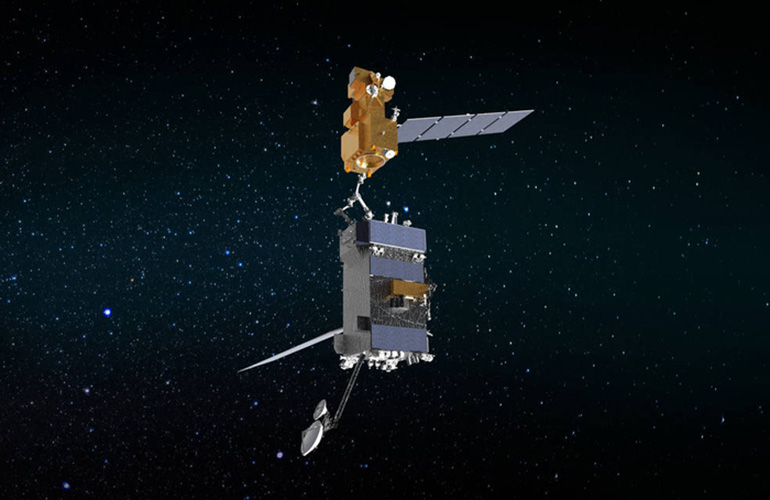|
Listen to this article  |

A depiction of OSAM-1 (bottom) servicing a satellite. | Source: NASA
NASA’s On-orbit Servicing, Assembly, and Manufacturing 1 (OSAM-1) mission completed its critical design review last week, bringing it a step closer to launch in 2025 at the earliest.
The OSAM-1 mission aims to be the first ever to refuel a satellite not designed to be serviced. OSAM-1 will also allow NASA to demonstrate its in-space manufacturing capabilities by producing a spacecraft beam through a process called pultrusion.
During the mission, OSAM-1 will travel to Landsat 7, an Earth-observing satellite launched in 1999, and refuel it. The mission will involve a spacecraft bus, which passed its critical review almost a year ago, a servicing payload with 16 subsystems, including tools, vision systems and two robotic arms, a ground system and the Pace Infrastructure Dexterous Robot (SPIDER) payload.
The SPIDER payload will have a third robotic arm, which it will use to manufacture a beam and assemble a functional communications antenna with stowed parts.
The review, which included each part of the system, verified that OSAM-1’s design was complete and that it met specified requirements. This milestone allows NASA to begin construction of the spacecraft, payloads and ground system.
Maxar Technologies will bring the spacecraft bus to NASA’s Goddard Space Flight Center in Greenbelt, Maryland later this year. There, engineers will finish integration and testing of all of OSAM-1’s components.
NASA awarded Maxar Technologies with a $142 million contract at the beginning of 2020 to design SPIDER and the spacecraft bus. SPIDER will travel on a modified Restore-L spacecraft bus.
Successfully refuelling a satellite not meant to be serviced will allow satellite operators to have new ways to manage their fleets more efficiently. If the mission goes well, NASA hopes to incorporate servicing technologies into other missions.
NASA’s satellite servicing technologies have also been licensed by Northrop Grumman. NASA hopes to jumpstart a domestic servicing industry by making its technologies commercially available.
Credit: Source link


Comments are closed.